16.Interconnection Networks
Outline
Introduction
Network Topology
Flow Control
Example IN
Introduction
How to connect individual devices together

Device (definition):
Component within a computer
Single computer
System of computers
Types of elements:
end nodes (device + interface)
links
interconnection network
Internetworking: interconnection of multiple networks
Interconnection networks should be designed to transfer the maximum amount of information within the least amount of time (and cost, power constraints) so as not to bottleneck the system
Reasons to concern interconnection networks
They provide external connectivity from system to outside world
Also, connectivity within a single computer system at many levels
I/O units, boards, chips, modules and blocks inside chips
Trends: high demand on communication bandwidth
increased computing power and storage capacity
switched networks are replacing buses
Computer architects must understand interconnect problems and solutions in order to more effectively design and evaluate systems
Interconnection Network Domains
Interconnection networks can be grouped into four major networking domains, depending on the
numberandproximityof devices to be interconnected:OCNs, SANs, LANs, and WANs
On-chip networks (OCNs), a.k.a., network-on-chip (NoC)
Interconnect microarchitecture functional units, register files, caches, compute tiles, processor and IP cores
Chip or multichip modules
Tens (in future, possibly 100s) of devices interconnected
Maximum interconnect distance on the order of centimeters
System/storage area networks (SANs)
Multiprocessor and multicomputer systems
›Interprocessor and processor-memory interconnections
Server and data center environments
›Storage and I/O components
Hundreds to thousands of devices interconnected
›IBM Blue Gene/L supercomputer (64K nodes, each with 2 processors)
Maximum interconnect distance typically on the order of tens of meters, but some with as high as a few hundred meters
›InfiniBand: 120 Gbps over a distance of 300 m
Local area networks (LANs)
Machine room or throughout a building or campus
Hundreds of devices interconnected (1,000s with bridging)
Maximum interconnect distance on the order of few kilometers (some with distance spans of a few tens of kilometers)
Example (most popular): Ethernet, with 10 Gbps over 40Km
Wide area networks (WANs)
Interconnect systems distributed across the globe
Internetworking support is required
Many millions of devices interconnected
Maximum interconnect distance of many thousands of kilometers
Example: ATM

Network Topology
Topology Overview
Definition: determines arrangement of channels and nodes in network
Analogous to road map
Often first step in network design
Significant impact on network cost-performance
Determines number of hops
› Latency
›Network energy consumption
Implementation complexity
›Node degree
›Ease of layout
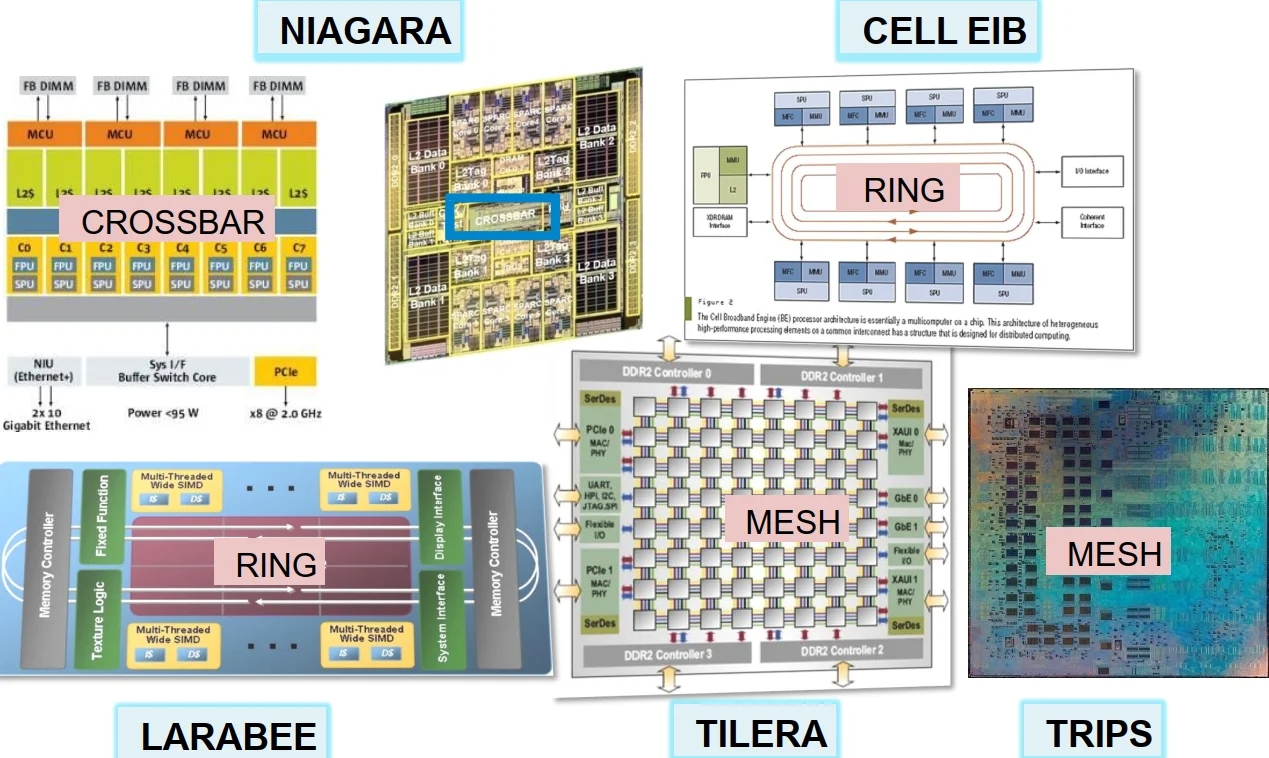
Network Metrics
Metrics are used to evaluate the performance and cost of network with given topology
Also influenced by routing/flow control
At this stage, we skip the impacts
›Assume ideal routing (perfect load balancing)
›Assume ideal flow control (no idle cycles on any channel)
(1) Degree
Switch Degree: number of links at a node
Proxy for estimating cost
›Higher degree requires more links and port counts at each router

(2) Hop Count
Path: ordered set of channels between source and destination
Hop Count: number of hops a message takes from source to destination
Simple, useful proxy for network latency
›Every node, link incurs some
propagation delayeven when no contention
Minimal hop count: smallest hop count connecting two nodes
Network diameter: largest min hop count in network
Average minimum hop count: average across all src/dst pairs
Implementation may incorporate non-minimal paths
›Increases average hop count
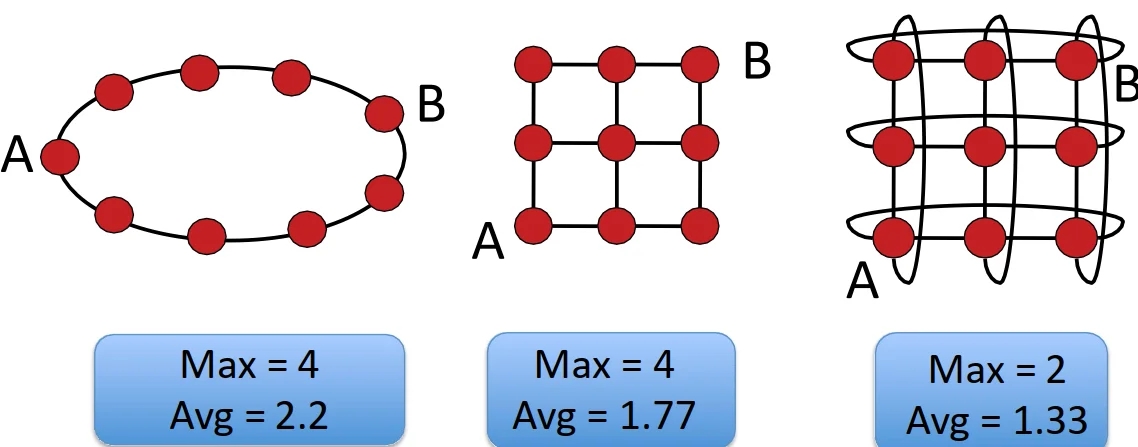
Uniform random traffic
Ring > Mesh > Torus
(3) Latency
Time for packet to traverse network
Start: head arrives at input port
End: tail departs output port
Latency = Head latency +
serialization latencySerialization latency: time for packet with Length
Lto cross channel with bandwidthb(L/b)
Approximate with hop count
Other design choices (routing, flow control) impact latency
›We skip these impacts now
(4) Maximum Channel Load
Estimatemax bandwidth the network can supportMax bits per second (bps) that can be injected by every node before it saturates
›Saturation: network cannot accept any more traffic
Determine the most congested link
›For given traffic pattern
›Will limit overall network bandwidth
›Estimate load on this channel
Maximum Channel Load Example

Uniform random
Every node has equal probability of sending to every node
Identify bottleneck channelHalf of traffic from every node will cross bottleneck channel
8 x ½ = 4
Network saturates at ¼ injection bandwidth
(5) Bisection Bandwidth
Common off-chip metric (片下指标)
Proxy for cost
Amount of global wiring that will be necessary
Less useful for on-chip
›Global on-chip wiring considered abundant
Cuts: partition all the nodes into two disjoint sets
Bandwidth of a cut
Bisection
A cut which divides all nodes into nearly half
Channel bisection -> min. channel count over all bisections
Bisection bandwidth -> min. bandwidth over all bisections
With uniform random traffic
½ of traffic crosses bisection
Throughput Example

Bisection = 4 (2 in each direction)
With uniform random traffic
3 sends 1/8 of its traffic to 4,5,6
3 sends 1/16 of its traffic to 7 (2 possible shortest paths)
2 sends 1/8 of its traffic to 4,5
Etc
Suppose channel load = 1
(6) Path Diversity
Multiple shortest paths (R) between source/destination
pair
Fault toleranceBetter
load balancingin networkRouting algorithm should be able to exploit path diversity
Many possible network topologies
Bus
Crossbar
Ring
Tree
Omega
Hypercube
Mesh
Torus
Butterfly
………
Bus interconnect

Good:
Simple design
Cost effective for a small number of nodes
Easy to implement coherence (via
snooping (侦听))
Bad:
Contention: all nodes contend for shared busLimited bandwidth: all nodes communicate over same wires
High electrical load = low frequency, high power
Crossbar interconnect

Each node is connected to every other node
Good:
O(1) latency and high bandwidth
Bad:
Not scalable: O(N2)
switches
High cost
Difficult to arbitrate at scale
Note: in this network illustration, each node is drawn twice for clarity (at left and at top)
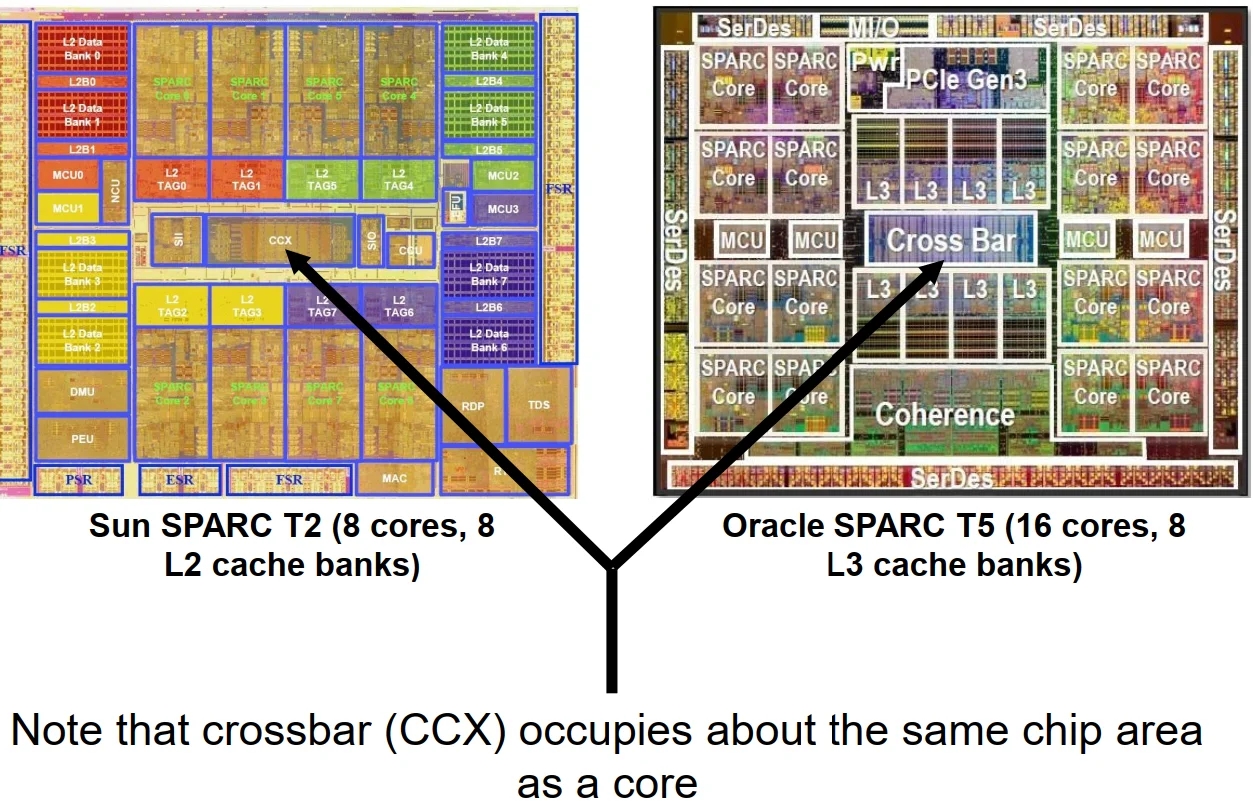
Ring
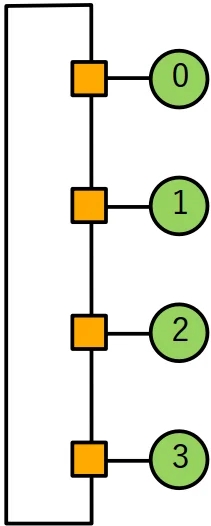
Good:
Simple
Cheap: O(N) cost
Bad:
High latency: O(N)
Bisection bandwidth remains constant as nodes are added (scalability issue)
Used in recent Intel architectures
Core i7, Xeon Phi
Also used in IBM CELL Broadband Engine (9 cores)
Intel’s ring interconnect (Sandy Bridge Microarch.)
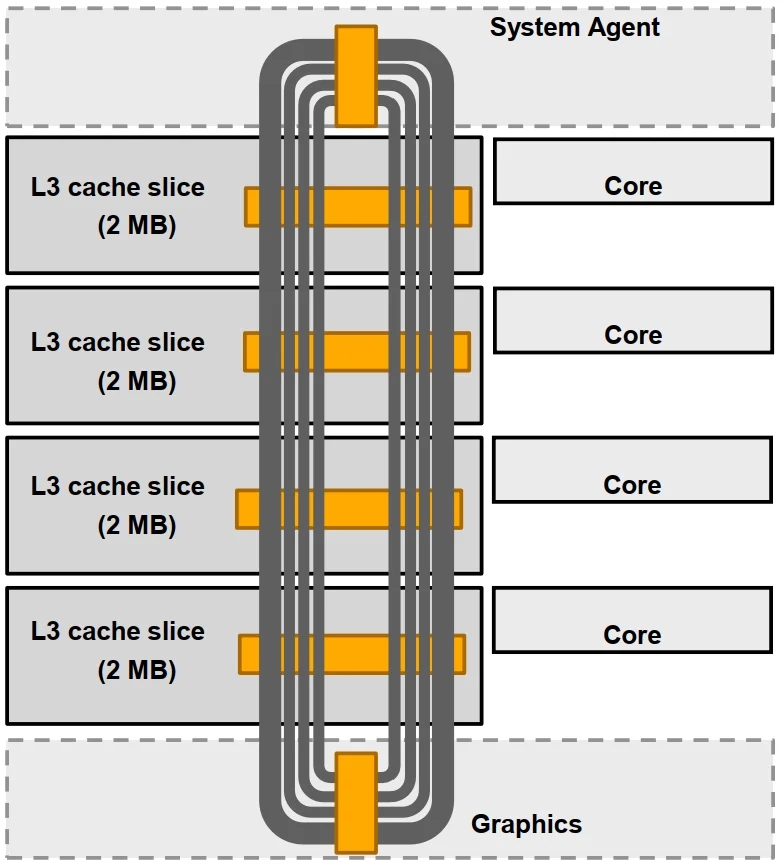
Four rings
request
snoop
ack
data (32 bytes)
Six interconnect nodes: four “slices” of L3 cache + system agent + graphics
Each bank of L3 connected to ring bus twice
Theoretical peak BW from cores to L3 at 3.4 GHz is approx. 435 GB/sec
When each core is accessing its local slice
Mesh
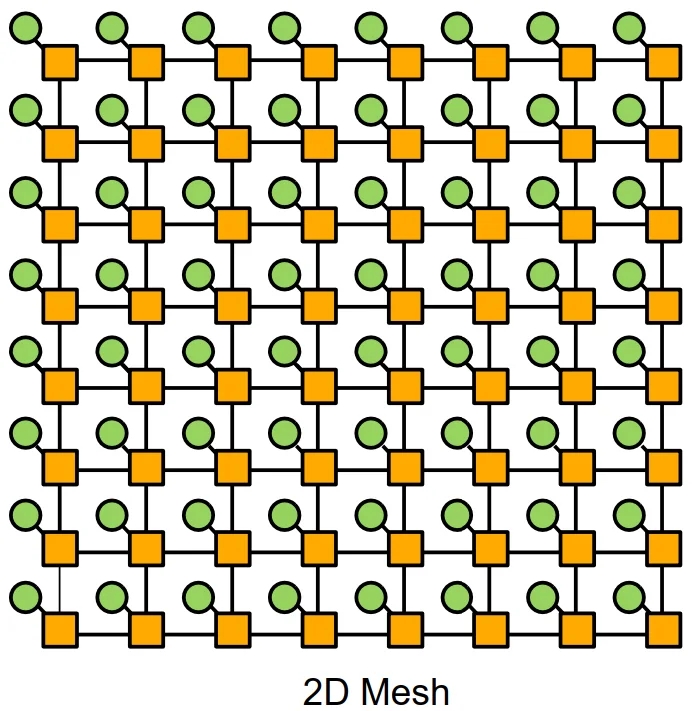
Direct network
O(N) cost
Average latency:O(sqrt(N))
Easy to lay out on chip: fixed-length links
Path diversity: many ways for message to travel from one node to another
Used by:
Tilera processors
Prototype Intel chips
Torus
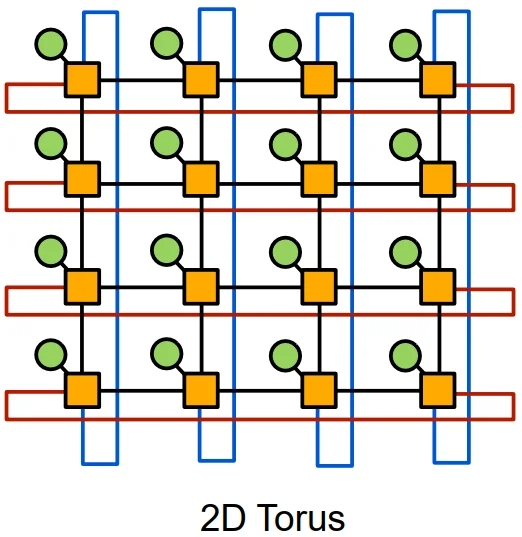
In mesh topology, node near edge or in middle of network is different
Torus topology introduces new links to avoid this problem
Still O(N) cost, but higher cost than 2D grid
Higher path diversity and bisection BW than mesh
Higher complexity
Difficult to layout on chip
Unequal link lengths
Trees
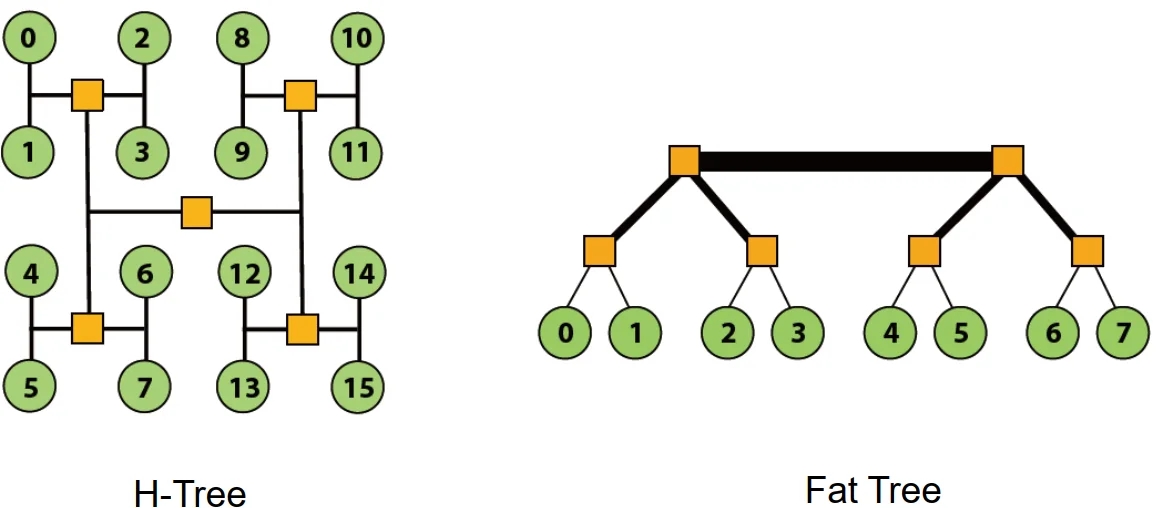
Planar, hierarchical topology
Like mesh/torus, good when traffic has locality
Latency: O(lg N)
Use “fat trees” to alleviate root bandwidth problem
Hyper cube in different dimension
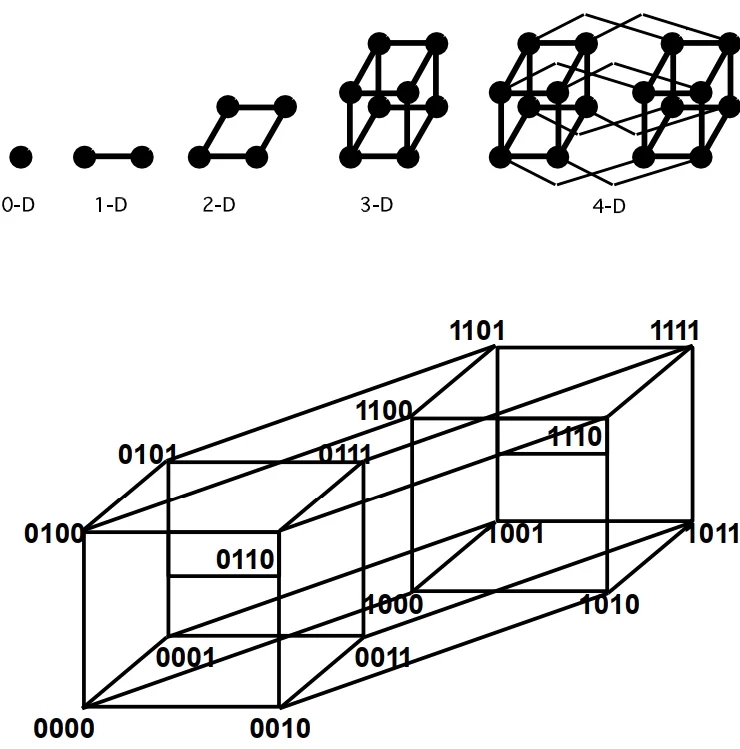
Low latency: O(lg N)
Radix: O(lg N)
Number of links O(N lg N)
6D hypercube used in 64-core Cosmic Cube computer developed at Caltech in the 80s
Multi-stage logarithmic

Indirect network with multiple switches between terminals
Cost: O(N lg N)
Latency: O(lg N)
Many variations: Omega, butterfly, Clos networks, etc
Review: network topologies
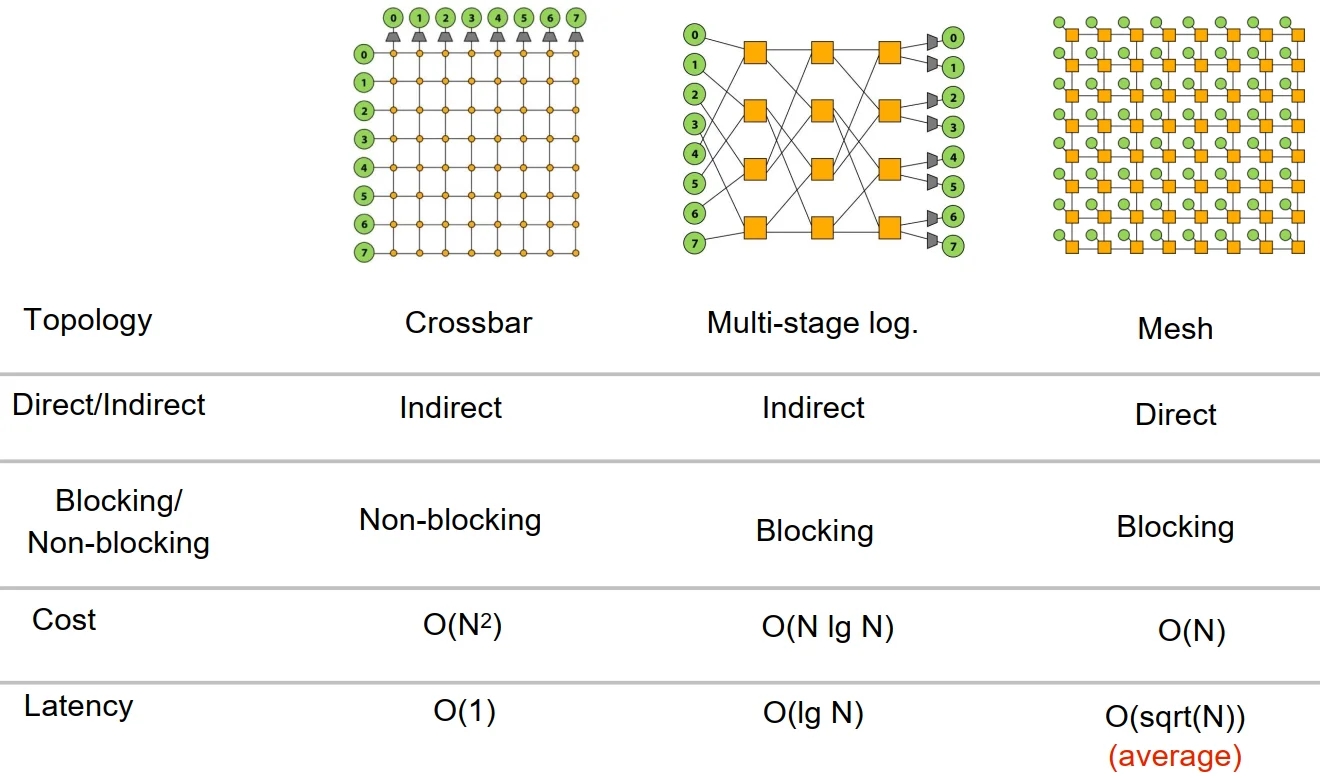
Flow Control
Flow Control Overview
Topology: determines connectivity of network
Routing: determines paths through network
Flow Control: determine allocation of resources to messages as they traverse network
Buffers and links
Significant impact on throughput and latency of network
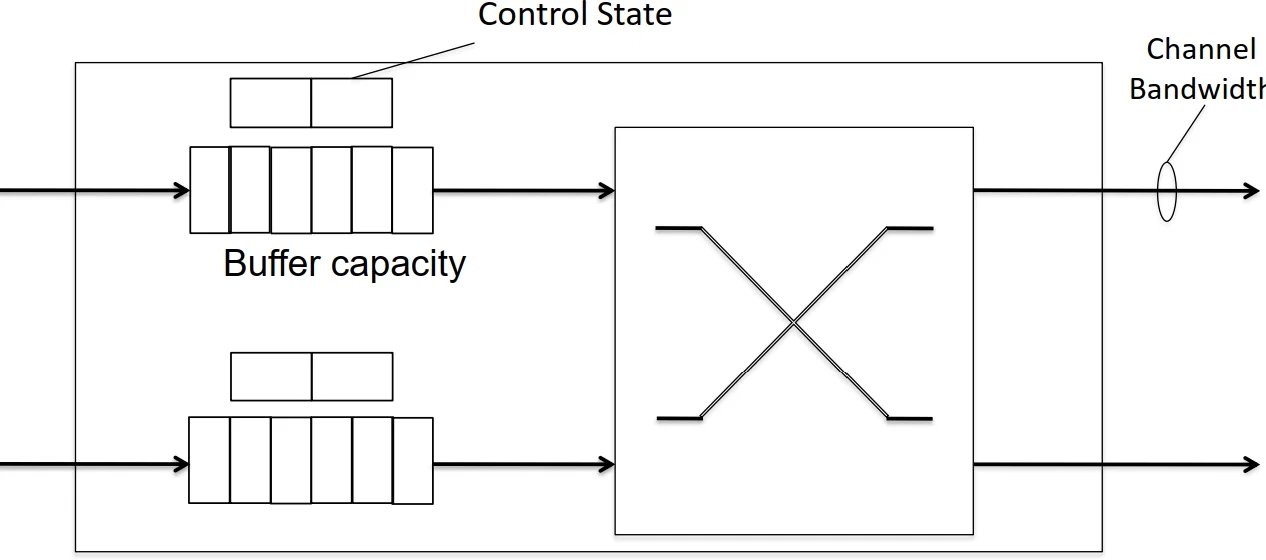
Control state records
allocation of channels and buffers to packets
current state of packet traversing node
Channel bandwidth advances flits along nodes
Buffers hold flits waiting for channel bandwidth
Packets
Messages: composed of one or more packets
If message size is <= maximum packet size only one packet created
Packets: composed of one or more flits
Flit: flow control digit
Phit: physical digit
Subdivides flit into chunks =
to link width
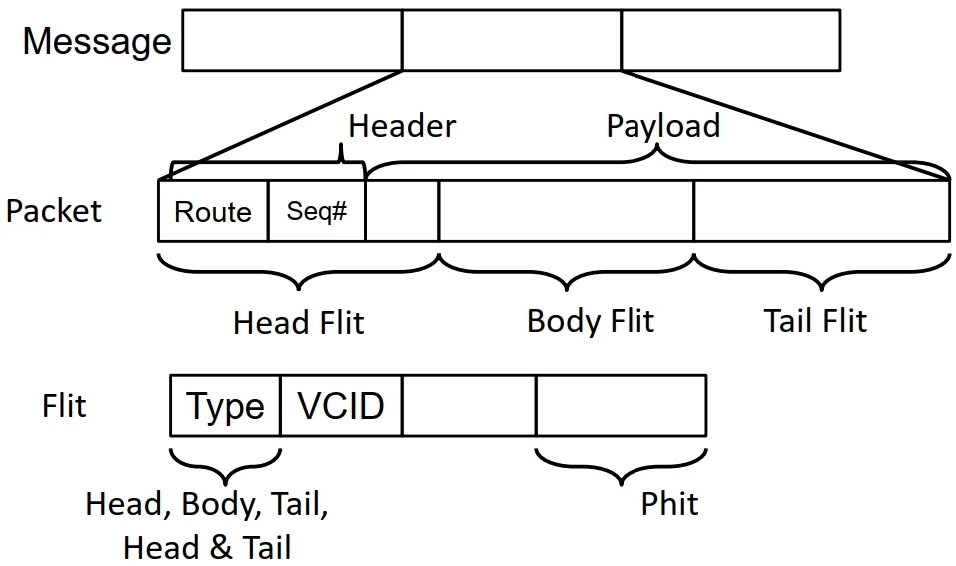
Off-chip: channel width limited by pins
Requires phits
On-chip: abundant wiring means phit size == flit size
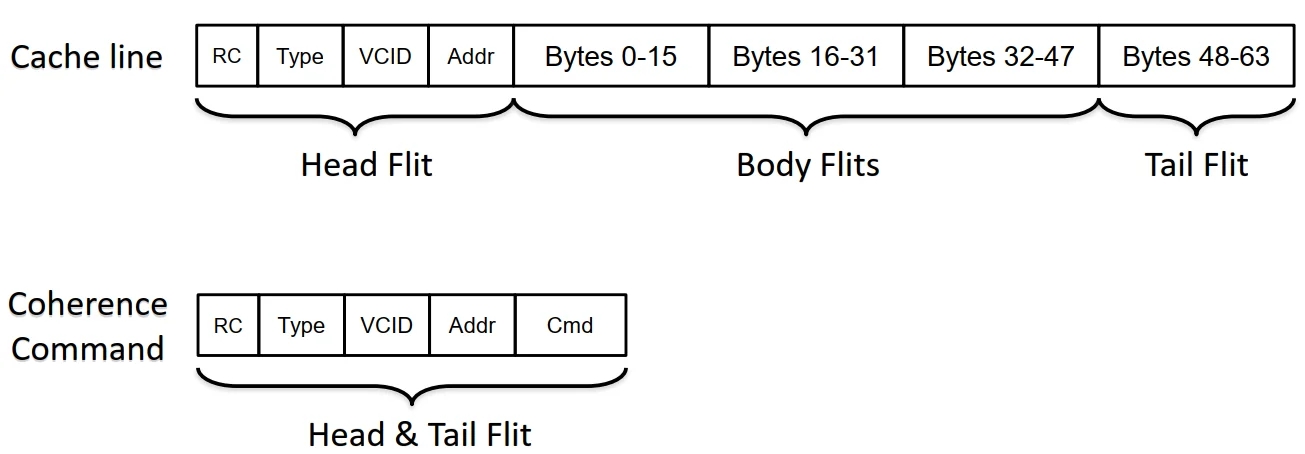
Packet contains destination/route information
Flits may not -> all flits of a packet must take same route
Switching
Different flow control techniques based on granularity
Message-based: allocation made at message granularity (circuit-switching)
Packet-based: allocation made to whole packets
Flit-based: allocation made on a flit-by-flit basis
Message-Based Flow Control
Coarsest granularity
Circuit-switching
Pre-allocates resources across multiple hops
›Source to destination
›Resources = links
›Buffers are not necessary
Probe sent into network to reserve resources
Circuit Switching
Once probe sets up circuit
Message does not need to perform any routing or allocation at each network hop
Good for transferring large amounts of data
›Can amortize circuit setup cost by sending data with very low per-hop overheads
No other message can use those resources until transfer is complete
Throughput can suffer due to setup and hold time for circuits
Links are idle until setup is complete
Circuit Switching Example
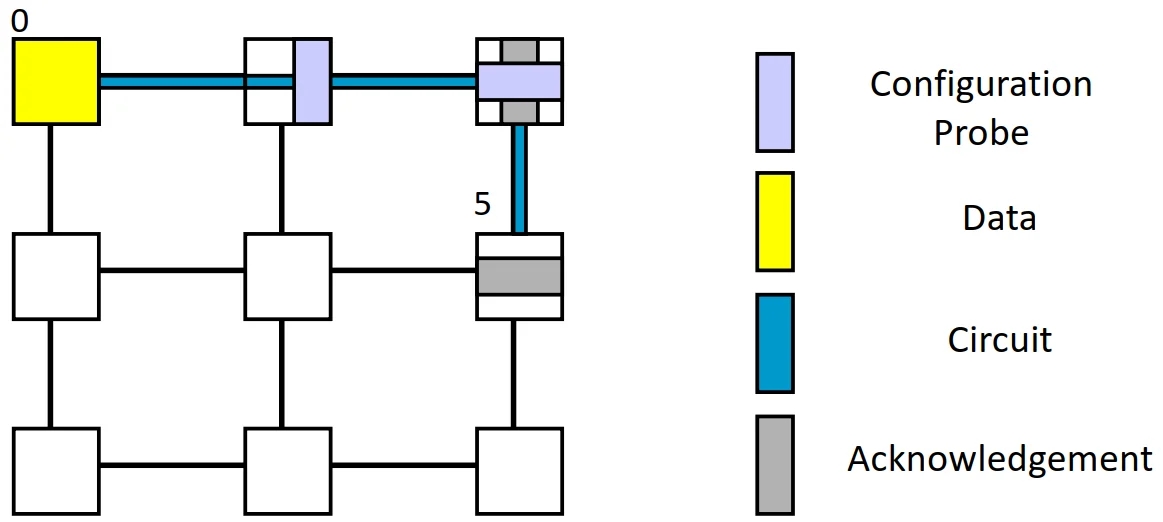
Significant latency overhead prior to data transfer
Data transfer does not pay per-hop overhead for routing and allocation
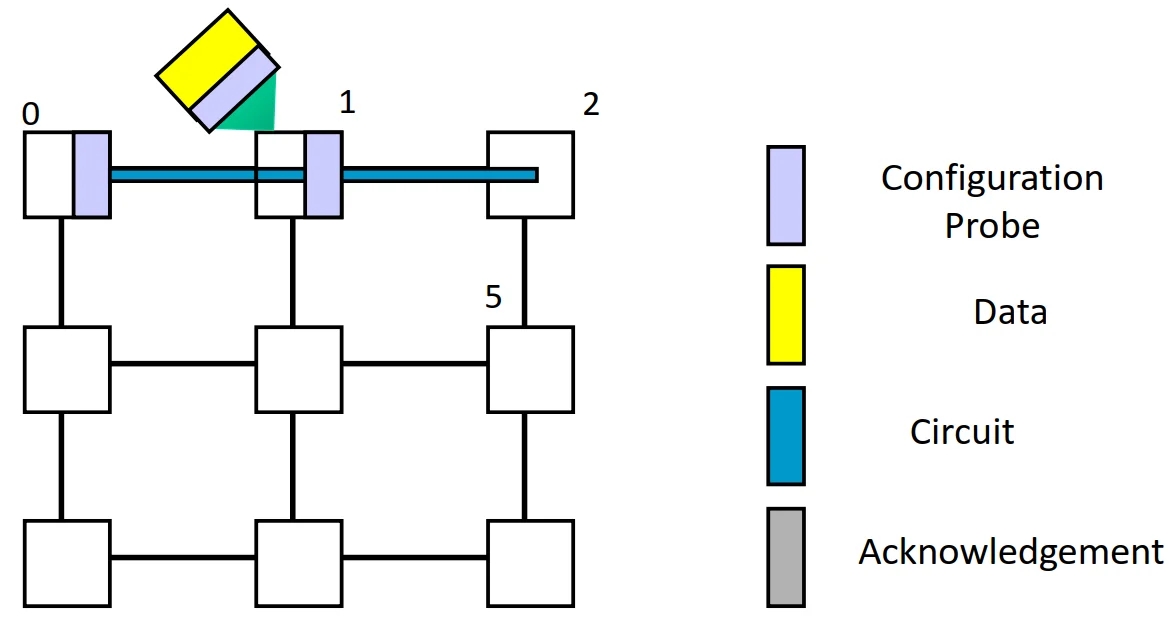
When there is contention
Significant wait time
Message from 1 -> 2 must wait
Time-Space Diagram: Circuit-Switching
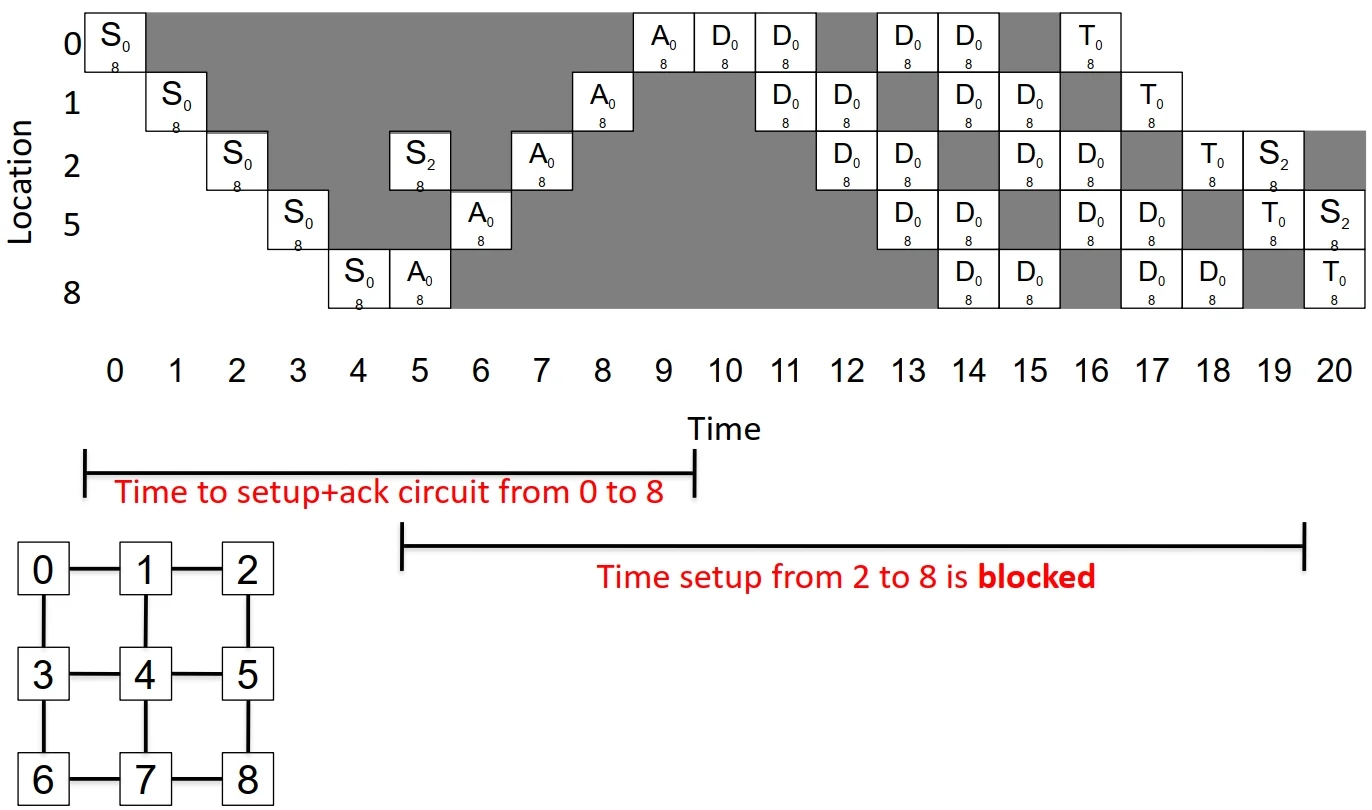
Packet-based Flow Control
Break messages into packets
Interleave packets on links
Better resource utilization
Requires per-node buffering to store in-flight packets
Two types of packet-based techniques
Store and Forward
Links and buffers are allocated to entire packet
Head flit waits at router until entire packet is received before being forwarded to the next hop
Not suitable for on-chip
Requires buffering at each router to hold entire packet
›Packet cannot traverse link until buffering allocated to entire packet
Incurs high latencies (pays serialization latency at each hop)
Store and Forward Example

High per-hop latency
Serialization delay paid at each hop
Larger buffering required
Time-Space Diagram: Store and Forward
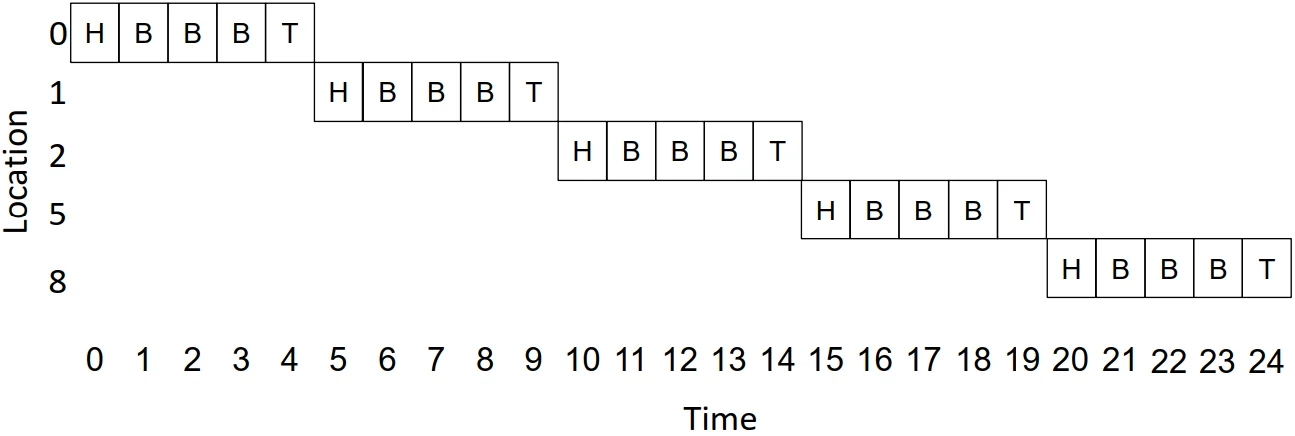
Packet-based: Virtual Cut Through
Links and Buffers allocated to entire packets
Flits can proceed to next hop before tail flit has been received by current router
But only if next router has enough buffer space for entire packet
Reduces the latency significantly compared to SAF
But still requires large buffers
Unsuitable for on-chip
Virtual Cut Through Example
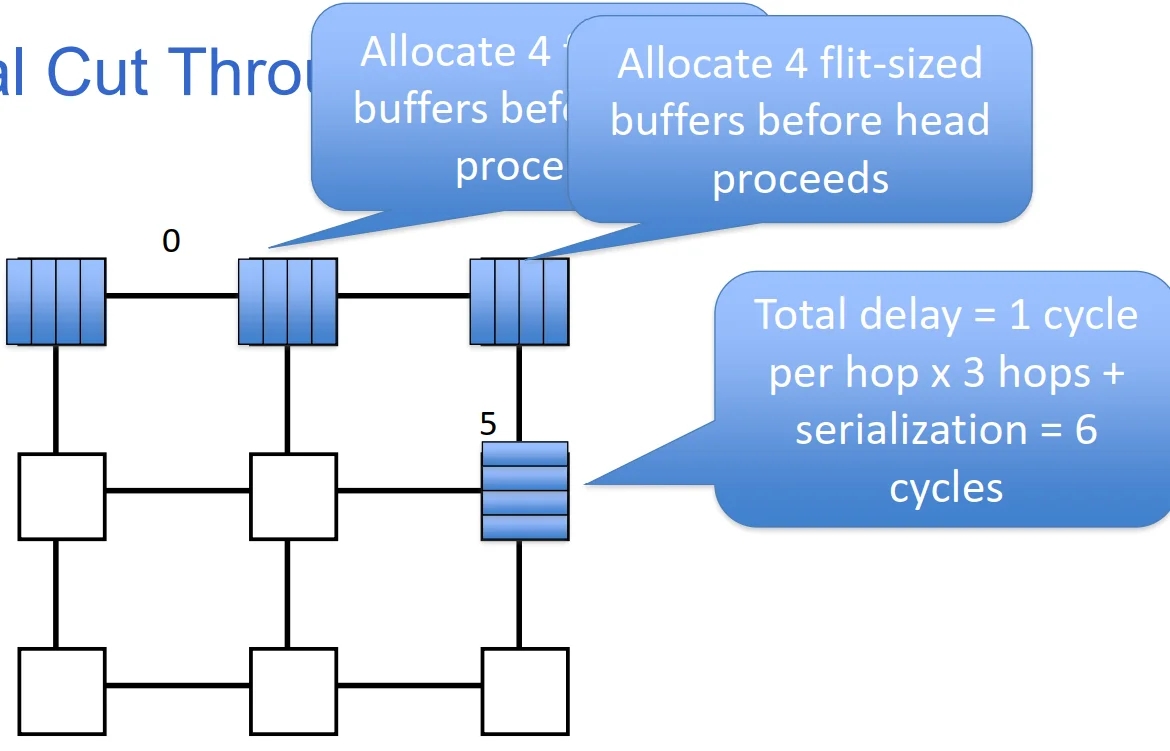
Lower per-hop latency
Large buffering required
Time-Space Diagram: VCT
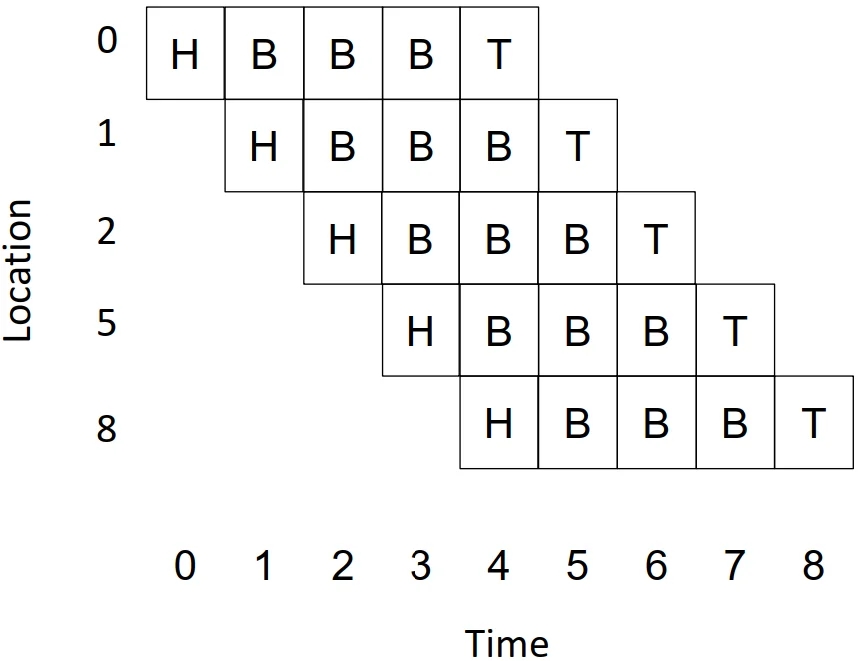
Virtual Cut Through

Throughput suffers from inefficient buffer allocation
Time-Space Diagram: VCT (2)
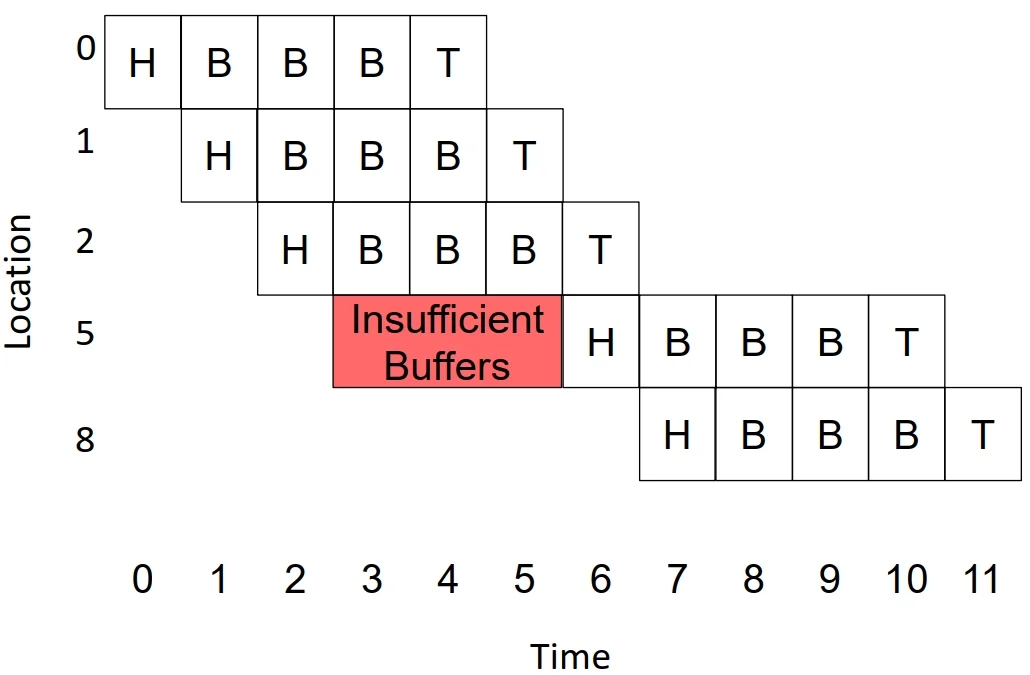
Flit-Level Flow Control
Help routers meet tight area/power constraints
Flit can proceed to next router when there is buffer
space available for that flit
Improves over SAF and VCT by allocating buffers on a flitby-flit basis
Wormhole Flow Control
Pros
More efficient buffer utilization (good for on-chip)
Low latency
Cons
Poor link utilization: if head flit becomes blocked, all links spanning length of packet are idle
›Cannot be re-allocated to different packet
›Suffers from
head of line(HOL) blocking
Wormhole Example
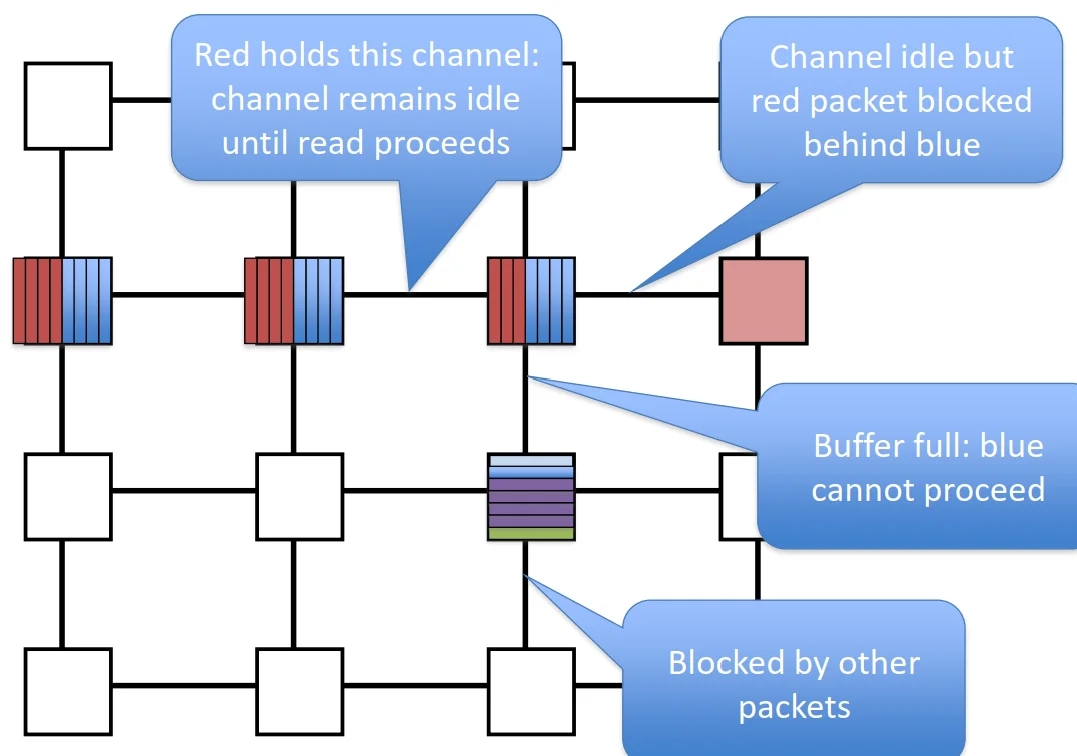
6 flit buffers/input port
Time-Space Diagram: Wormhole
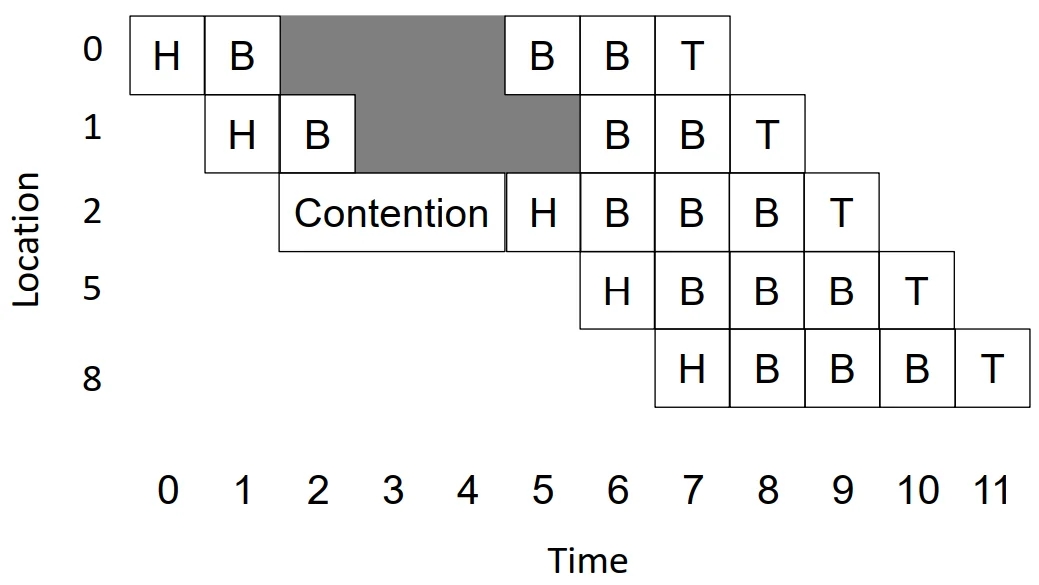
Virtual Channels
First proposed for deadlock avoidance
We’ll not talk about deadlock in the class
Read 《On-Chip Networks》 for reference
Can be applied to any flow control
First proposed with wormhole
Virtual Channel Flow Control
Virtual channels used to
combat HOL blockinginwormhole
Virtual channels: multiple flit queues per input port
Share same physical link (channel)
A case of virtualization
Link utilization improved
Flits on different VC can pass blocked packet
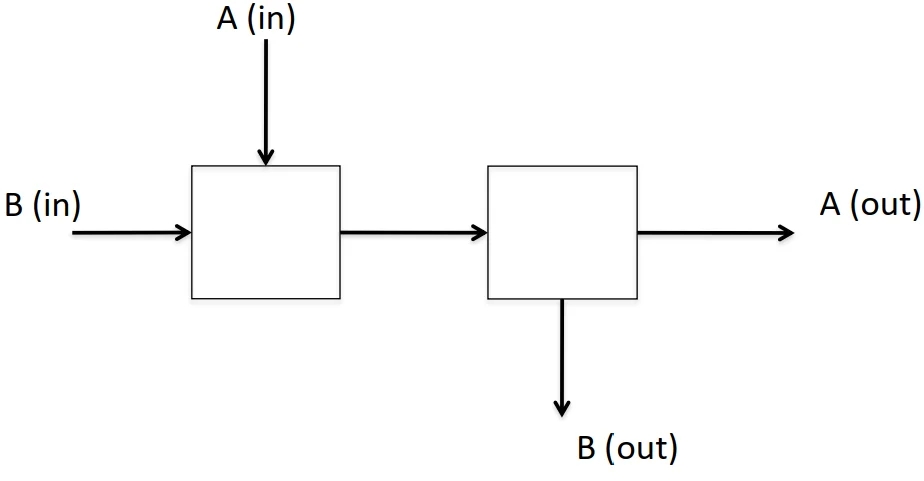
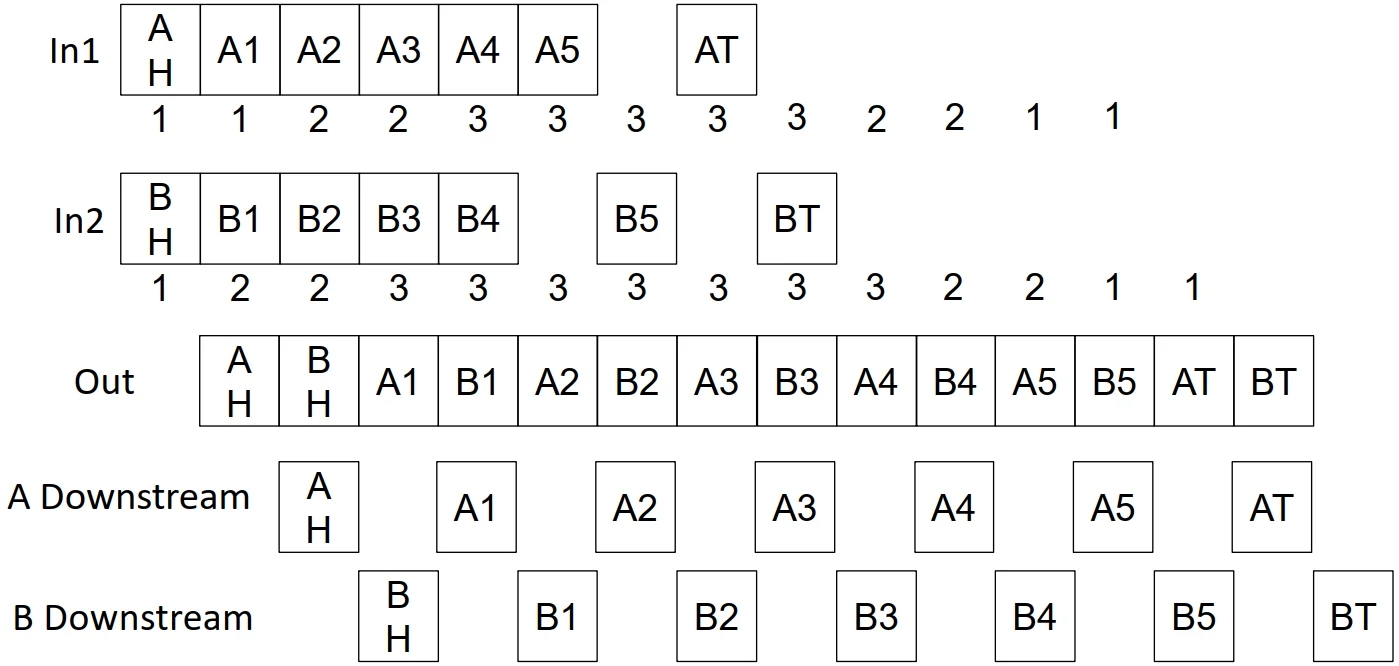
Packets compete for VC on flit by flit basisIn example: on downstream links, flits of each packet are available every other cycle
Upstream links throttle because of limited buffers
Does not mean links are idle
May be used by packet allocated to other VCs
Virtual Channel Example
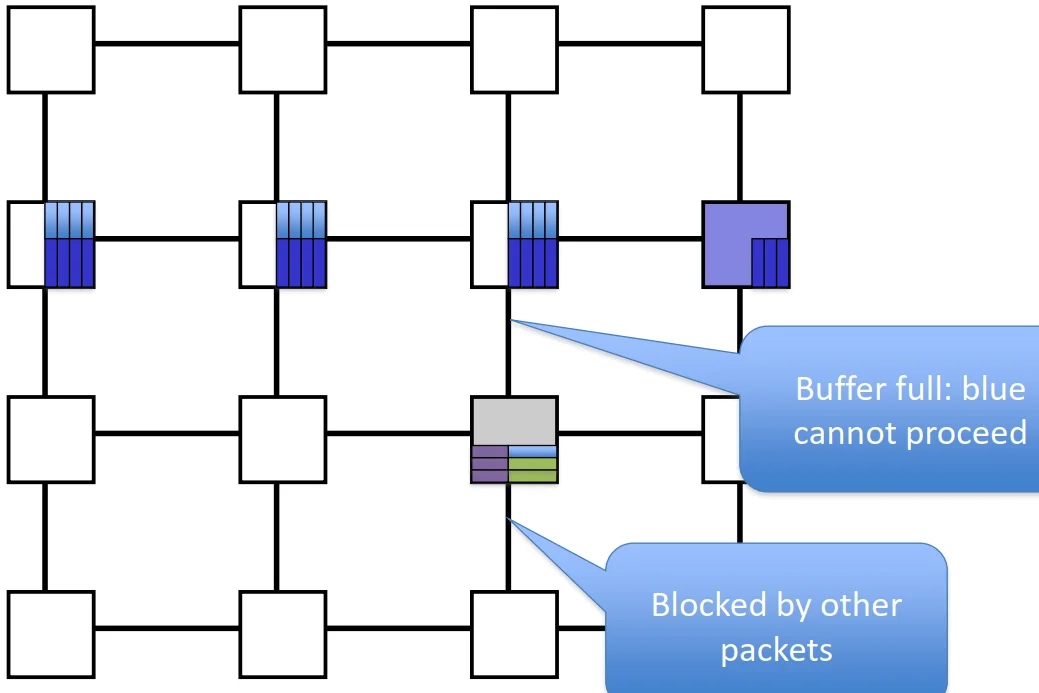
6 flit buffers/input port
3 flit buffers/VC
Example IN
Blue Gene/L 3D Torus Network
360 TFLOPS (peak)
2,500 square feet
Connects 65,536 dual-processor nodes and 1,024 I/O nodes


Last updated